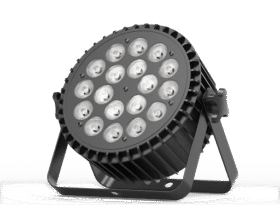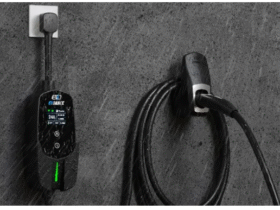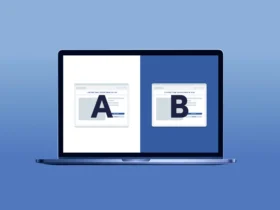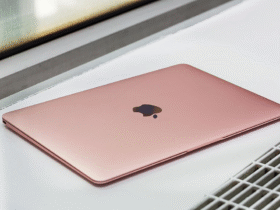In today’s fast-paced digital world, the phrase swap face has become more than just a trend — it’s a new way of expressing creativity, humor, and innovation. Whether you’re scrolling through TikTok or editing content for your brand, face swapping is now a common and engaging feature in modern apps and tools.
But what does it really mean to swap face, and how has this technology evolved to become a part of everyday digital life?
What Does “Swap Face” Mean?
To swap face means digitally replacing the face of one person with another, either in a photo or video. This process can be done using basic face detection or with advanced artificial intelligence (AI) for more accurate and realistic results.
From playful filters on your favorite social media platforms to complex applications in cinema and advertising, the ability to swap faces has created new dimensions for how we interact with media.
The Technology Behind Face Swapping
When users swap face using an app or software, the system uses facial recognition algorithms to detect and analyze key facial features like:
● Eye positioning
● Nose structure
● Mouth movement
● Skin tone and lighting
Basic tools use 2D overlays, while more advanced systems use AI-powered models such as Generative Adversarial Networks (GANs) to produce lifelike results. These tools can even match expressions, movements, and angles in real-time, giving users a natural-looking result.
Evolution of Swap Face Apps
Initially, face-swapping was limited to fun camera filters. But today’s tools are far more powerful. Some of the most popular apps now allow users to create full video clips, memes, and even music videos by simply uploading a selfie.
Here are a few apps that support high-quality face swaps:
● Reface: Popular for swapping faces into movie scenes and GIFs.
● FaceMagic: Allows you to swap face in videos, reels, and clips.
● Zao: A Chinese app that went viral for its impressive accuracy.
● DeepFaceLab: Used for high-end face swap editing and deepfake content.
With just a few clicks, you can insert yourself into your favorite movie scene or become part of a trending meme.
Real-Life Applications of Face Swap
Although many use face swap for fun, this technology has powerful real-world uses. Let’s explore how professionals are using “swap face” in different industries:
● Entertainment Industry: Editors can replace a stunt double’s face with the actor’s for seamless action scenes.
● Advertising: Brands create relatable video ads by swapping faces to match local markets or demographics.
● Education & Training: In healthcare or military training, simulated scenarios use face-swapping to improve learning outcomes.
● Gaming and AR/VR: Players can upload their own face and become the hero of their favorite video game.
Face swapping also enhances user engagement in mobile apps, giving people more interactive and customized experiences.
Ethical Considerations
With power comes responsibility. One of the biggest concerns with the ability to swap face is the potential for misuse — especially in creating fake or misleading content. When done without consent, this can lead to privacy violations, misinformation, or reputational damage.
That’s why many platforms now enforce clear guidelines, and developers are working on AI detection systems to identify manipulated content.
If you’re using swap face technology, keep these best practices in mind:
● Always use your own content or have permission from others.
● Avoid using face swap to spread false information or impersonate others.
● Choose apps that value privacy and transparency.
Face Swapping vs. Deepfakes
Many people confuse the terms swap face and deepfake, but there is a clear difference:
● Face Swapping typically refers to fun or casual use of replacing one face with another.
● Deepfakes go a step further, using AI to manipulate voice, expressions, and even body movements — often with the intent to deceive.
While both rely on similar technology, the purpose and ethical use make a huge difference.
Cultural and Social Impact
The ability to swap face has changed how people communicate and express themselves online. It has become a viral form of digital humor, giving birth to thousands of meme pages and parody videos.
Celebrities, influencers, and everyday users now use face swapping to create funny content, relive historical moments, or experiment with different looks — such as gender swaps or aging effects.
In many ways, swap face tools have democratized content creation, making it easier for anyone to be part of the digital storytelling world.
Looking Ahead: The Future of Face Swapping
As AI technology continues to evolve, face-swapping tools will become even more realistic and interactive. Some exciting developments to watch for include:
● Real-Time Face Swaps in Video Calls: Soon, you might be able to talk on Zoom or Google Meet with a completely different face.
● AI-Generated Personalized Ads: Brands could tailor video ads to show a version of the viewer, increasing engagement.
● Face Swapping in the Metaverse: In virtual spaces, users will be able to customize avatars with detailed facial swaps.
The ability to swap face will not just be about fun — it will become a valuable asset in business, education, healthcare, and communication.
Conclusion
Face-swapping technology has come a long way from basic photo filters. Today, the ability to swap face has opened up a world of possibilities in digital creativity, marketing, entertainment, and beyond. It allows people to tell stories, express themselves, and engage with content in entirely new ways.
Used responsibly, swap face tools can enhance how we connect, create, and imagine — in both virtual and real-world experiences.
For more info, please visit here:
Website: https://faceswapai.com/
Phone: 09608900761
Address: 144 Sarangani, Ayala Alabang, Muntinlupa, 1780 Metro Manila, Philippines














Leave a Reply